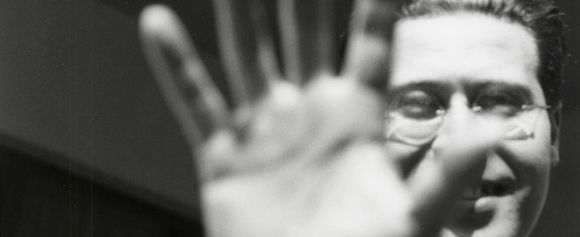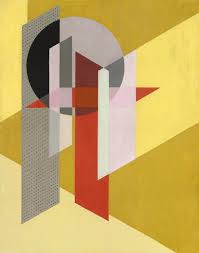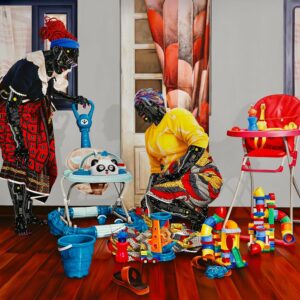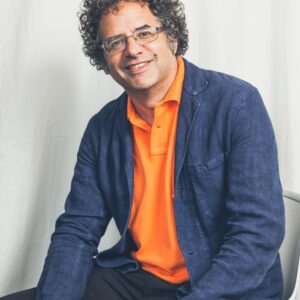
Sensing the Future runs 8th Oct 2014 – 2nd February 2015
www.bauhaus.de/
“László Moholy-Nagy felt it was very important that we controlled technology lest we be controlled by technology. That was his basic message and I feel that message is relevant today because we all feel occasionally overwhelmed” – Oliver Botar
Curated by Oliver Botar of the School of Art at the University of Manitoba, Canada, this exhibition presents the work of Avant-gardist and Bauhaus teacher László Moholy-Nagy, integrated alongside work by relevant contemporary artists; The aim being to create an immediate and fully immersive experience for the viewer, impacting on all the senses – to be experienced at whatever level each individual is able to consume it.
Moholy–Nagy overstepped the boundaries of the conventional view of art. His practice was defined by his multi-disciplinary approach, together with his need to question the traditional perceptions of what art is. His boundary pushing approach was so far ahead of its time it was already raising issues that are still relevant today; most especially with regard to the rapid advance of technology and its impact on the future of the arts as a whole.

The narrative begins with his time spent in a feminist women’s commune ‘Schwarzerden,’ near Darmstadt. Here, he harnessed the development of all the senses through new teaching methods.
Following on from this Moholy-Nagy’s famous photograms are presented, with an explanation detailing the process of producing the artworks. In this section there is also a film from the 1950s by Norman McLaren; a triumph of sound and vision completed by drawing directly on 35mm film with a simple pen. The result is a strange display of animated dancing blobs, accompanied by echoing water droplet sounds.
Personally, my favourite section is to the left of the main entrance. Here you have a hanging kinetic sculpture entitled Floe by Erika Lincoln and several of Moholy-Nagy’s iconic simultaneous projections and shadow display works.
Floe presents a series of attached Perspex arrows suspended above the gallery space, gently moving in a pre-determined manner. From a distance the arrows are indiscernible and the piece gives the impression of a pre formed “mass” – something natural and organic – a living, breathing organism. However, as you are inevitably drawn closer the piece becomes more challenging. The arrows giving it a new context, together with the more obvious creaking plasticized sound as it moves.
Words by Lesley Samms
About Floe by Erika Lincoln
Floe is a kinetic sculpture from a body of work produced by Erika that explores patterns of movement in the Arctic Sea. Using data sets from different studies from the NOAA (National Oceanographic and Atmospheric Association.) open databases. A number of methods of measurement were used from satellites, aerial flyovers, to ground measurements. In this work the data is from NASA’s Goddard Space Flight Center’s Scientific Visualization Studio, it is comprised of 30 measurements of the polar ice cap’s area from 1982 to 2012. (Data NOAA GFDL CM2.1)
To view the installation of Floe, please follow this link: http://vimeo.com/97964484
www.lincolnlab.net/sculpture.html
About Laszlo Moholy-Nagy 1895 – 1946
Laszlo Moholy-Nagy was born László Weisz in Bacsborsod, Hungary to a Jewish Hungarian Family. He changed his German-Jewish surname to that of his mother’s Christian lawyer friend Nagy, who supported the family and helped raise Laszlo and his brothers when their Jewish father, Lipót Weisz left. Later, he added “Moholy” (“from Mohol”) to his surname, after the name of the Hungarian town Mohol in which he grew up.
Immediately before and during World War I he studied law and served in the war, where he sustained a serious injury. On leave and during his convalescence, Moholy-Nagy became involved first with the journal Jelenkor (“The Present Age”) and then with the “Activist” circle around the journal Ma (“Today”). After his discharge from the Austro-Hungarian army in October 1918, he attended the private art school of artist Robert Bereny. He moved to Berlin in 1920.
In 1923, Moholy-Nagy replaced Johannes Itten as the instructor of the foundation course at the Bauhaus. During this time the Bauhaus became known for the versatility of its artists, and Moholy-Nagy was no exception. Throughout his career, he became proficient and innovative in the fields of photography, typography, sculpture, painting, printmaking, and industrial design. One of his main focuses was photography and he coined the phrase “the New Vision” for his belief that photography could create a whole new way of seeing the outside world that the human eye could not. His theory of art and teaching is summed up in the book The New Vision, from Material to Architecture.
In 1937 he moved to Chicago to become Director of the New Bauhaus. Unfortunately, the school lost the financial backing of its supporters after only a single academic year, and it closed in 1938. However, in 1939, Moholy-Nagy with support opened the School of Design, which, in 1944, became the Institute of Design. In 1949 the Institute of Design became a part of the Illinois Institute of Technology and the first institution in the United States to offer a PhD in design.
Moholy-Nagy died of leukemia in Chicago in 1946.
About the Bauhaus Archive:
The Bauhaus-Archiv?/?Museum für Gestaltung was founded in 1960 as a private society. The aim was and is ‘to collect and present all documents relating to the activities and cultural and intellectual heritage of the Bauhaus’. This includes photographs, books, designs, models and artistic works, as well as the organisation of exhibitions and accompanying programmes.
www.bauhaus.de/en



